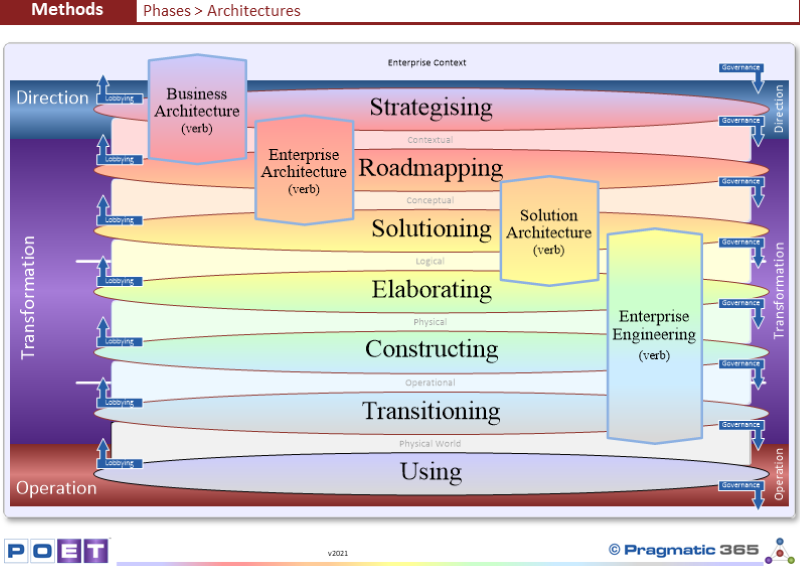https://pragmatic365.org/display-show.asp?Showname=TRAIN-2-Foundation&ComponentNo=000280
Do you agree with these Phase boundaries?
How does your Enterprise map onto them?
Does everyone working within the Transformation domain understand how where they work, fits into the whole?
If not, would there be a benefit if they did?
What will you do to allow people to understand how they fit into the whole, and what will you use?
https://pragmatic365.org/display-show.asp?Showname=TRAIN-2-Foundation&ComponentNo=000280
FREE EA Training at www.PEAF.com/Training
FREE EA Books at www.PEAF.com/Books
#PEAF #PragmaticEA #EntArch #enterprisearchitecture #BizArch #Change #Innovation #BusinessModel #CEO #Strategy #TOGAF #ITgovernance #agileculture #agile #agileleadership #agilemethodology #itstrategy #ceos
Business Architecture feeds Enterprise Architecture feeds Solution Architecture feeds Enterprise Engineering.
https://pragmatic365.org/display-show.asp?Showname=TRAIN-2-Foundation&ComponentNo=000280

Here we see the fundamental Phases of Enterprise
Transformation, laid out over the Strategically important Capabilities of the
Enterprise (DOTS).
The Direction part of the Enterprise feeds requirements for
transformation into the Transformation part of the Enterprise which delivers
change into the Operations part of the Enterprise. ...to read more, please Login or Register |
Keypoint |
Adopt this component by... |
Business Architecture feeds Enterprise Architecture feeds Solution Architecture feeds Enterprise Engineering.
|
Management: Ensure everyone in the Enterprise understands which phases are part of BA, EA, SA and Enterprise Engineering.
|
Questions to ponder... |
Do you agree with these Phase boundaries? |
How does your Enterprise map onto them? |
Does everyone working within the Transformation domain understand how where they work, fits into the whole? |
If not, would there be a benefit if they did? |
What will you do to allow people to understand how they fit into the whole, and what will you use? |